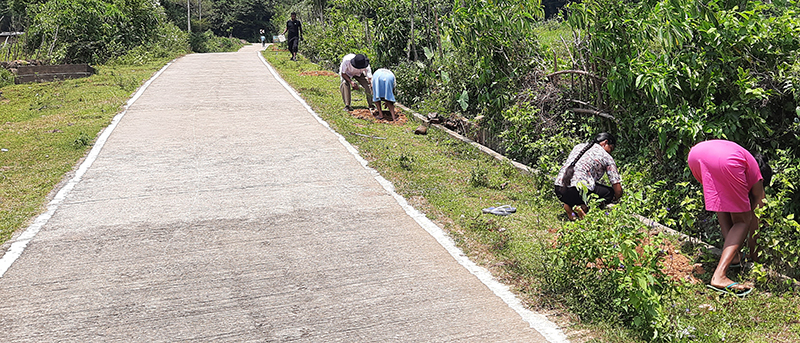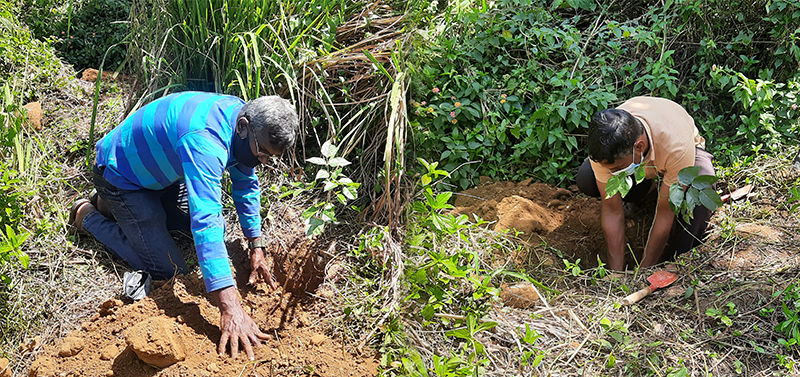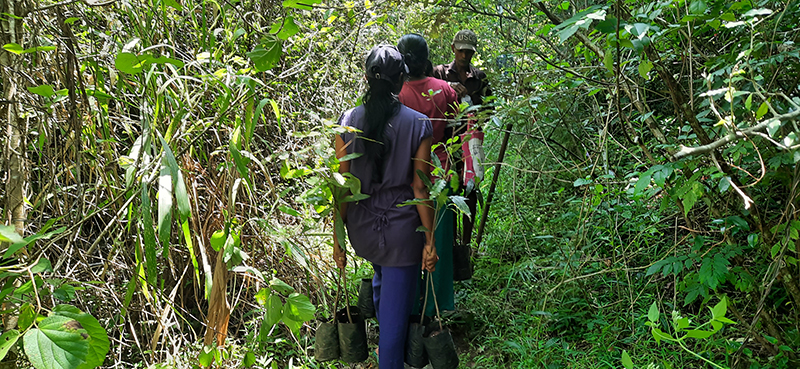“Green Cover” is a very fashionable word in our world – especially because there is so little of it to be found anywhere on earth these days. The KCF though, is still deep montane forest – either virgin or with substantially dark virgin growth. Its boundary areas still comparatively healthy with white forest cover. I am using local parlance here – dark is literally jungle so thick that rarely does sunlight hit the forest floor making the whole area akin to twilight in all light and white is less dense where light does permeate to the ground and lights up the area. Well, in such terms, the KCF is at present pretty sound all things considered. However, what with the protectionist approach removing farmers from their chena traditions much land adjacent to the KCF and its boundaries have been allowed to run fallow and we knew that if something was not done about that, eventually the white forest will get hammered and even the dark forest attacked.

The whole community turned up to plant the canopy at Rathninda
However, we were careful. You see, “green cover” is not just dark wood /strong wood that lasts for decades only. For the communities living in those areas, there was also the agro-greening that was required on their own plots. There were watersheds feeding vital rivers and tanks where there were settlements that had been damaged. There were the concrete and asphalt roads whose sides had been stripped bare of all vegetation. There were swaths of fractured terrain where old tea plantations had gone missing literally – leaving a scarred and ugly scape. These were the areas that were very unfashionable – there were no rare frogs or impossible to find bats or two instances of a supposedly magical medicinal plant that had to be protected with life as forfeit. Yet they were critical to the continued harmony of the human-environment interface. This is why we redefined “green cover” to mean all of those areas that we mentioned.
Next, we got our community to understand what we saw and believe us, they got it in a jiffy. No coaching required. They knew it because it was part of their heritage – their traditions. So, instead of the GMSL doing NGO work, the community – and we mean the whole community (i.e. the farmers, the youth, the children, the men, the women, the state officials, the area business people, the local government officials, the enforcers like the police and the forest department) took collective ownership and just went in – planting canopy roads, rehabilitating damaged watershed areas, shoring up river banks, helping prune down dense foliage in home gardens, creating nurseries, transporting plants, obtaining plants from places where they had found them and just doing their thing – almost as if we were not there. This is precisely the outcome we wanted. The community to know, understand, act. That way, they will continue whether we are there or not. Green cover initiatives takes years to show success – way beyond the COLIBRI project life cycle. With their enthusiasm, the community showed that their environment and their green areas were in safe hands.

Amal and Aruna,our field controllers take a hand planting on the banks of the Dungolu Oya

The youth take plants deep into the jungle to improve the green cover of the Meegahawewa watershed






